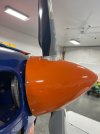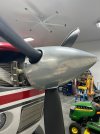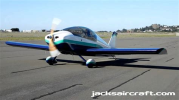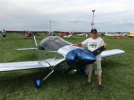kicktireslightfires
Pre-takeoff checklist
- Joined
- Jun 11, 2020
- Messages
- 344
- Display Name
Display name:
kicktireslightfires
Does anyone know what the consequences of going with a shorter or longer spinner cone than the one that came with the plane would have? I would assume the length of the spinner was a conscious choice by the manufacturer that goes beyond looks? A prop manufacturer is telling me that switching from a 16 inch long spinner to a 13 inch long spinner will have absolutely no consequences. I just want to verify that. Not looking for guesses though; does anyone know matter of factly? Thanks in advance!




